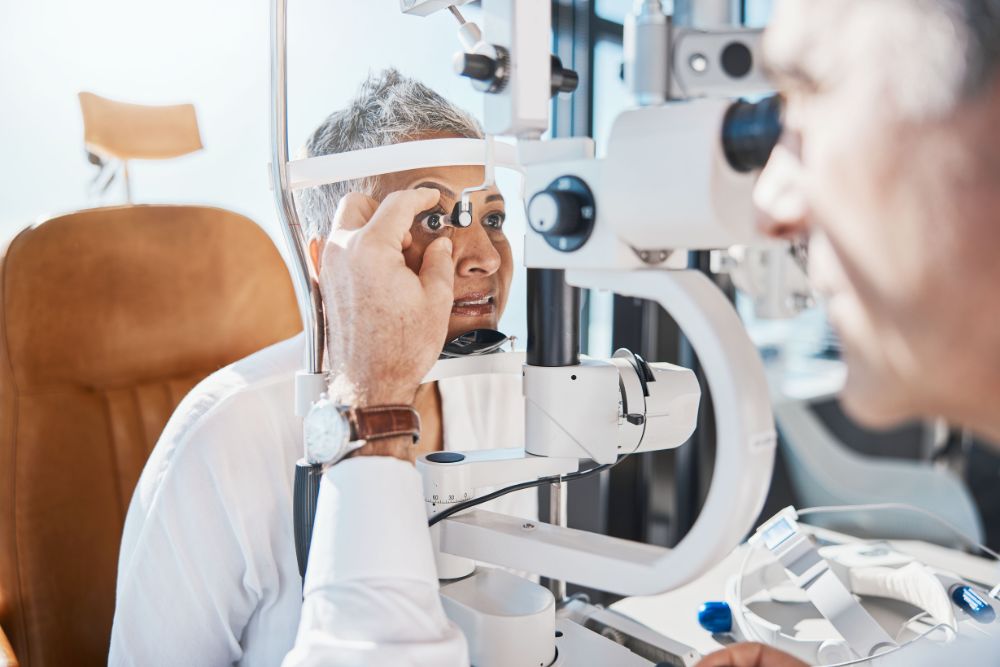Understanding Retinal Vein Occlusion: A Silent Threat to Vision

When it comes to vision, not all threats are loud. Some, like retinal vein occlusion (RVO), develop without any warning, but can quietly and quickly compromise your sight. Understanding the signs and knowing your risk can make all the difference.
What is RVO, And Who’s at Risk?
RVO occurs when a vein that carries blood away from the retina becomes partially or totally blocked. This blockage prevents blood from moving out of the retina, causing a back-up of blood and fluid that can lead to swelling, bleeding, and vision changes. There are two main types of RVO:
- Central retinal vein occlusion (CRVO), which is a blockage that affects the main retinal vein
- Branch retinal vein occlusion (BRVO), which is a blockage that occurs in one of the smaller branches of the retinal vein
The risk of RVO can increase with age, commonly affecting those in their 50s to 60s. However, several other factors can also increase your risk of RVO, including:
- High blood pressure
- Glaucoma
- Diabetes
- High Cholesterol
- Smoking
Understanding and managing your risk factors can play a key role in protecting your vision and preventing future complications.
What Are the Symptoms of RVO?
RVO visual changes can be sudden and typically occur in one eye. You might notice:
- Blurry vision
- Vision loss
- Dark spots in your field of vision
Contact your retina specialist immediately if you notice any changes in your vision. While RVO symptoms can appear suddenly, the condition often develops gradually, making routine eye exams essential for early detection.
How is RVO different from Retinal Artery Occlusion (RAO)?
While RVO affects the veins, retinal artery occlusion involves a blocked artery that supplies oxygen-rich blood to the retina. Think of RVO as a “traffic jam” and artery occlusion as a “power outage,” similar to a stroke, where blood flow is suddenly cut off, depriving the retina of oxygen. Artery occlusions are more often an emergency and can result in more severe, irreversible vision loss. Both are serious, but they call for different responses and treatment strategies.
Treatment for RVO
While the blockage itself can’t be reversed, several treatments can help manage the effects of RVO and protect your vision:
-
Anti-VEGF Injections: In response to a blockage, your body may begin to grow new blood vessels that are weak and prone to rupture, leading to inflammation and damage that causes various vision problems. Anti-VEGF injections help reduce this swelling and limit the growth of these abnormal blood vessels.
-
Steroid Injections: Steroids can also reduce inflammation in the retina and are often used if anti-VEGF injections aren’t enough.
-
Laser Treatment: In some cases, laser therapy is used to seal off leaking blood vessels or prevent the growth of abnormal new ones.
-
Surgery: In severe cases, a specialist may recommend a vitrectomy, a surgical procedure that removes the gel-like vitreous inside the eye to clear blood, relieve traction, or improve access for treating complications related to RVO, such as macular edema or retinal detachment.
Protecting Your Vision
RVO is often described as “silent” because there’s no warning sign before symptoms strike, but with prompt diagnosis and modern treatment options, many patients can stabilize their vision and, in some cases, improve it. If you’re at risk or if you’ve noticed any changes in your vision, schedule an appointment with California Retina Consultants today. Our team specializes in diagnosing and treating vascular eye conditions with precision, care, and the latest advancements in retinal medicine.
